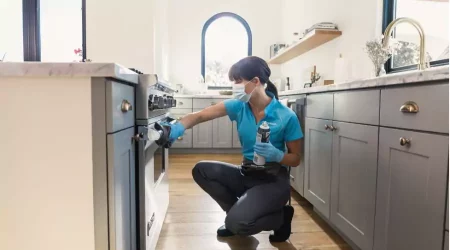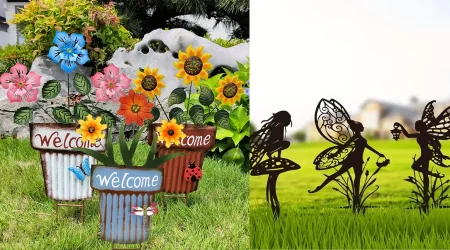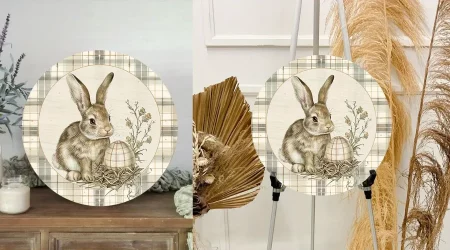
Have you ever walked into a room and immediately felt a sense of calm or excitement just by looking at the colors around you? That’s because color psychology plays a big role in our emotions and moods. And when it comes to home decor, choosing the right colors can make all the difference in creating a space that feels comfortable, inviting, and even energizing. In this article, we’ll dive into the world of color psychology and explore how you can use it to elevate your home decor from drab to fab. From calming blues to energizing yellows, we’ll show you how to choose the perfect colors for each room in your home and create a space that not only looks great but also feels great. So, whether you’re redecorating your entire home or just looking to add a pop of color, read on to discover the power of color psychology in home decor.
Understanding the basics of color theory
To use color psychology effectively in your home decor, it’s important to understand the basics of color theory. The color wheel is a great place to start. It’s a tool that shows the relationship between different colors and can help you choose complementary colors that work well together. The color wheel is divided into three categories: primary colors (red, blue, and yellow), secondary colors (green, orange, and purple), and tertiary colors (yellow-green, blue-green, red-purple, etc.).
Another important concept to understand is color temperature. Colors are either warm or cool. Warm colors, such as red, orange, and yellow, are stimulating and energetic. Cool colors, such as blue, green, and purple, are calming and relaxing. Understanding the difference between warm and cool colors can help you create a mood in your home that matches your desired atmosphere.
Finally, it’s important to consider the saturation and intensity of colors. Saturation refers to how pure or intense a color is, while intensity refers to how bright or vivid a color is. Using colors with different levels of saturation and intensity can create depth and dimension in your home decor.
The impact of color on mood and emotions
Now that you understand the basics of color theory, let’s explore the impact of color on mood and emotions. Different colors can evoke different emotions and moods, so it’s important to choose colors that align with the atmosphere you want to create in your home.
For example, blue is a calming color that can create a sense of relaxation and tranquility. It’s a great color for bedrooms, bathrooms, and living rooms where you want to create a peaceful atmosphere. Yellow, on the other hand, is an energizing color that can create a sense of happiness and optimism. It’s a great color for kitchens, dining rooms, and home offices where you want to create a lively and stimulating atmosphere.
Green is a versatile color that can create a sense of balance and harmony. It’s a great color for any room in your home where you want to create a sense of calm and relaxation. Red is a bold and powerful color that can create a sense of passion and excitement. It’s a great color for accent walls, furniture, and accessories in rooms where you want to create a sense of drama and energy.
Using warm colors to create a cozy atmosphere
Warm colors are perfect for creating a cozy and inviting atmosphere in your home. Red, orange, and yellow are all warm colors that can make a room feel more welcoming and comfortable.
Red is a great color for creating a sense of intimacy and warmth in living rooms and bedrooms. You can use it as an accent wall or in your furniture and accessories to create a sense of drama and energy. Orange is a great color for creating a sense of warmth and comfort in kitchens and dining rooms. It’s a great color for accent walls, curtains, and tablecloths.
Yellow is a great color for creating a sense of happiness and optimism in any room in your home. You can use it as an accent wall, in your furniture and accessories, or even in your flooring to create a sense of energy and light.
Creating a calming environment with cool colors
Cool colors are perfect for creating a calming and relaxing environment in your home. Blue, green, and purple are all cool colors that can make a room feel more peaceful and tranquil.
Blue is a great color for bedrooms, bathrooms, and living rooms where you want to create a sense of calm and relaxation. You can use it as an accent wall, in your bedding and curtains, or even in your flooring to create a sense of serenity and tranquility.
Green is a great color for any room in your home where you want to create a sense of balance and harmony. You can use it as an accent wall, in your furniture and accessories, or even in your flooring to create a sense of calm and relaxation.
Purple is a great color for creating a sense of luxury and sophistication in bedrooms and living rooms. You can use it as an accent wall, in your bedding and curtains, or even in your furniture and accessories to create a sense of elegance and style.
Adding excitement with bold and bright colors
If you want to add excitement and energy to your home decor, bold and bright colors are the way to go. Red, yellow, and orange are all bold and bright colors that can make a room feel more lively and stimulating.
Red is a great color for creating a sense of drama and passion in living rooms and bedrooms. You can use it as an accent wall, in your furniture and accessories, or even in your artwork to create a sense of energy and excitement.
Yellow is a great color for creating a sense of happiness and optimism in kitchens, dining rooms, and home offices. You can use it as an accent wall, in your furniture and accessories, or even in your lighting to create a sense of energy and light.
Orange is a great color for creating a sense of warmth and comfort in any room in your home. You can use it as an accent wall, in your furniture and accessories, or even in your flooring to create a sense of energy and light.
Using color to enhance the natural light in a room
Another way to use color in your home decor is to enhance the natural light in a room. Light colors, such as white, beige, and light gray, can reflect natural light and make a room feel brighter and more spacious.
You can use light colors on your walls, ceiling, and flooring to create a sense of openness and lightness. You can also use mirrors and reflective surfaces to bounce natural light around the room and create a sense of brightness and energy.
Combining colors for a cohesive and stylish look
To create a cohesive and stylish look in your home decor, it’s important to combine colors in a way that works well together. There are a few different ways to do this.
One way is to use a monochromatic color scheme. This involves using different shades and tones of the same color throughout the room. For example, you could use different shades of blue in a bedroom to create a sense of tranquility and relaxation.
Another way is to use complementary colors. These are colors that are opposite each other on the color wheel. For example, blue and orange are complementary colors. Using these colors together can create a sense of balance and harmony in your home decor.
Finally, you can use an analogous color scheme. This involves using colors that are next to each other on the color wheel. For example, blue, green, and purple are all analogous colors. Using these colors together can create a sense of depth and dimension in your home decor.
Common mistakes to avoid when using color in home decor
While color psychology can be a powerful tool in home decor, there are some common mistakes to avoid. One mistake is using too many colors in a room. This can create a sense of chaos and confusion. Instead, stick to a few colors that work well together.
Another mistake is not considering the lighting in a room. The way a color looks can change depending on the lighting in the room. Make sure to test your colors in different lighting conditions before committing to a color scheme.
Finally, don’t be afraid to experiment with color. It’s okay to try out different colors and see what works best for you. Remember, the goal is to create a space that not only looks great but also feels great.
Conclusion and final tips for using color psychology in home decor
In conclusion, color psychology can be a powerful tool in home decor. Understanding the basics of color theory and the impact of color on mood and emotions can help you choose the perfect colors for each room in your home. Warm colors can create a cozy atmosphere, cool colors can create a calming environment, and bold and bright colors can add excitement to your home decor. By combining colors in a way that works well together, you can create a cohesive and stylish look that not only looks great but also feels great. And remember, don’t be afraid to experiment with color and have fun with your home decor!









